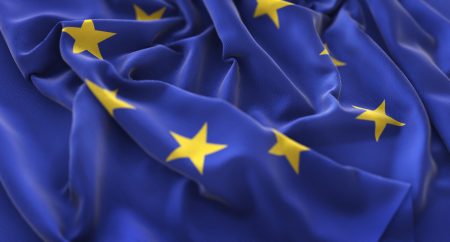
News
INTERVIEW
“We support companies to grow with the cascade funding of European funds”
Sara Mateo, leader of the Entrepreneurship Area of Zabala Innovation, details in this interview the characteristics of cascade funding
European programmes
These are the most interesting programmes in the areas of digitalisation, energy, environment, health, regions, social innovation, transport and universities

With its budget of €95.5 billion for the period 2021-2027, Horizon Europe is the giant of research and innovation funding in the Old Continent. Perhaps its best-known calls are those for clusters in pillar 2, although under the umbrella of this EU framework programme there are many other grants such as, for example, in pillar 1, those of the European Research Council (ERC), the Marie Curie Actions (MSCA), or those for Research Infrastructures; and, in pillar 3, those of the European Innovation Council (EIC) or the European Institute of Technology and Innovation (EIT). Calls are also published under the heading Widening participation and strengthening the European Research Area.
Horizon Europe, however, is not the only EU funding for innovative projects in all areas. This 2021-2027 period has seen the launch of a new specific programme focused exclusively on research and development of security and defence technologies, the European Defence Fund (EDF). In addition to the EDF, these are some of the programmes and calls beyond Horizon Europe, divided by broad areas.
Bringing digital technology to the economy, society, and public administration. This is the overall objective of the Digital Europe programme, which seeks to strengthen this sector and fill the gaps that still distance the EU from other regions of the world, such as the US, China and Japan. The aim is to compete on a global scale, encourage co-investment, re-control the European value chain, solve economic and social challenges, ensure the deployment of digital technology across Europe, and support SMEs in accessing digital technology. Digital Europe funds projects in five areas: supercomputing and data processing capabilities, core artificial intelligence capabilities, cybersecurity, improving the use of digital skills in EU society and economy, and supporting the digitisation of businesses and public administrations. Its fourth call will close on 26 September 2023.
Among the most interesting programmes in this area are also CEF Digital. The Connecting Europe Facility (CEF) aims to accelerate investment in the field of trans-European networks facilitating cross-border connections, through modern, high-performance, multi-modal infrastructure. In the digital sector, it aims to contribute to the development of investment projects of common interest relating to the deployment of and access to secure digital networks, including 5G systems, and to increasing the resilience and capacity of digital backbones in Union territories by linking them to neighbouring territories, as well as to the digitisation of transport and energy networks. The next call, endowed with €350 million, is expected to be published between October and December 2023, with a closing date between February and March 2024. Its themes range from 5G corridors to backbone connectivity for global digital gateways, 5G for smart communities and backbone networks for the pan-European federation of clouds.
The European Commission plans to publish a call under its hydrogen strategy by the end of the year, with funding from the Innovation Fund. The call will finance mature green hydrogen production projects up to their tenth year of production. What is remarkable is that it is an auction: the applicant must specify how many euros per kilo produced he/she wants to receive (the limit of 4 euros cannot be exceeded). The auction will be won by the applicant who asks the least per kilo. The subsidy will be obtained by multiplying this amount by the amount of hydrogen produced. The budget of the call – €800 million – will have to be split between at least three projects, as the maximum funding limit per project is set at 33% of the available funds.
Beyond the amount bid by the candidate in the auction, the other main eligibility criterion is the maturity of the project, in which the users of the hydrogen to be produced, the builders of the production facilities, the supplier of the electrolysis system, and the capacity to undertake the investment and operate it during its useful life, which will be financed up to its tenth year of life, must be well identified. The project will also have to start no more than three and a half years after the auction, and a guarantee covering 7.5% of the subsidy will be required.
The EU’s star fund for the environment is undoubtedly LIFE, as it is the only programme dedicated exclusively to this area. Among its calls for proposals, the best known are the Standard Action Projects (SAPs). Strategic Integrated Projects (SIPs), however, can also be very interesting. Their objective is the implementation of the plan, strategy, or action by the responsible regional, national, or transnational authority, which is also the coordinator of the proposal. These are projects with a budget of between 10 million euros and 30 million euros and a duration of between 5 and 10 years. Funding is 60%.
This year, the deadline for submitting the concept note is 5 September. After this first filter, the full proposal can be submitted until 5 March 2024. In this type of LIFE calls, Zabala Innovation has already successfully led the Urban Klima 2050, Nadapta and Ecoadapt50 projects, in which it also offers support for administrative and financial tasks.
A new feature of LIFE 2023 is also the Technical assistance for replication call, which aims to encourage the scaling up and replication of the results of other projects funded by this or other EU programmes (60% funding). The deadline for submission of proposals is 27 July 2023. Also new is the call for Legislative and Policy Priorities (PLP) projects (90% funding), with a deadline of 7 September 2023.
The EU4Health programme aims to invest in building up stocks of medical supplies in case of crisis; create a pool of health staff and experts that can be mobilised to prevent or combat health crises in the EU; train health professionals for deployment across the EU; increase surveillance of health threats; and improve the resilience of health systems to ensure better health outcomes for all. EU4Health is implemented through annual work programmes supporting a wide range of actions, with funding for eligible entities, health organisations and NGOs from EU or non-EU countries associated with the programme.
Under the European Regional Development Fund (ERDF), the Interregional Innovation Investments (I3) Instrument supports interregional innovation projects in their commercialisation and scaling-up phases, providing the necessary tools to overcome regulatory and other barriers and bring them to investment level. The I3 focuses on financial and advisory support for investments in interregional innovation projects, and for the development of value chains in less developed regions. So far, the beneficiaries of support have been, in order of importance: private companies (mainly SMEs), universities, the public sector and research centres.
In this area we highlight Creative Europe, the only EU programme specifically designed to support the cultural and creative sectors. With a budget of €2.44 billion until 2027, Creative Europe helps artists, creators, cultural professionals, and organisations to cooperate and co-create across borders. The beneficiaries of the grants are public and private entities in the cultural and creative sector, and the media. This programme has more than 20 calls for proposals, with a wide range of budgets and types of projects, and is divided into three areas: culture, media and cross-sectoral.
Another opportunity is the Citizens, Equality, Rights and Values (CERV) programme. Its main objectives are to promote equality and inclusion (through its Equality, Rights and Gender Equality, and Daphne sections), on the one hand, and European citizens’ participation (Union values and Citizens’ engagement participation), on the other. With a budget of €1.55 billion for the period 2021-2027, this programme is aimed at non-profit organisations (including business-driven non-profit foundations), authorities, international networks and universities or researchers.
Connecting Europe Facility for Transport (CEF Transport) finances investment projects or, in some cases, preliminary engineering studies to launch the former. These include rail infrastructure projects, inland waterway transport, sea and inland ports, roads, rail terminals and multimodal logistics platforms. Other sets of topics are dedicated to digitalisation in this sector, reducing the impact of transport on the environment, and promoting safety. Other calls focus on infrastructure investment projects for alternative fuels (charging points for electricity, hydrogen, and natural gas). A new feature of this programme is the calls to adapt the trans-European transport network for dual civilian and military use. Generally, investment projects for works are financed at a rate of 30% of eligible costs, except for some topics and studies, where this rate is 50%. In cross-border actions or in disconnected territories, it can reach up to 70%, and up to 85% in countries with cohesion funds (Poland, Portugal, and Romania, among others).
In the field of education, training, youth and sport, the European programme par excellence is Erasmus+. With a budget of around 26 billion euros for the period 2021-2027, this programme promotes mobility for students and staff in vocational education and training, among other things. Its priorities are inclusion and diversity, digital transformation, the environment and the fight against climate change, and participation in democratic life.

News
INTERVIEW
Sara Mateo, leader of the Entrepreneurship Area of Zabala Innovation, details in this interview the characteristics of cascade funding

Opinion
Cities

Iñaki Armendáriz
Consultant and EUI expert

Publication
FINANCIAL FRAMEWORK
Have a look to our downloadable brochure with all the information, where you can see how much is allocated to each programme.
Zabala Innovation assists private and public players in their search for and acquisition of public funding and has developed a methodology for accompanying and supporting national and European project coordinators.
We provide advice to activities that encourage innovation, aimed at promoting the development of new innovative markets from the demand side, through public procurement.
To maximise the success and impact of a project, we manage the communication and dissemination activities, but we also define a social innovation strategy and tools to measure its impact.
This website uses cookies so that we can provide you with the best user experience possible. Cookie information is stored in your browser and performs functions such as recognising you when you return to our website and helping our team to understand which sections of the website you find most interesting and useful.
Strictly Necessary Cookie should be enabled at all times so that we can save your preferences for cookie settings.
This website uses Google Analytics to collect anonymous information such as the number of visitors to the site, and the most popular pages.
Keeping this cookie enabled helps us to improve our website.
Please enable Strictly Necessary Cookies first so that we can save your preferences!
This website uses the following additional cookies:
(List the cookies that you are using on the website here.)
Please enable Strictly Necessary Cookies first so that we can save your preferences!